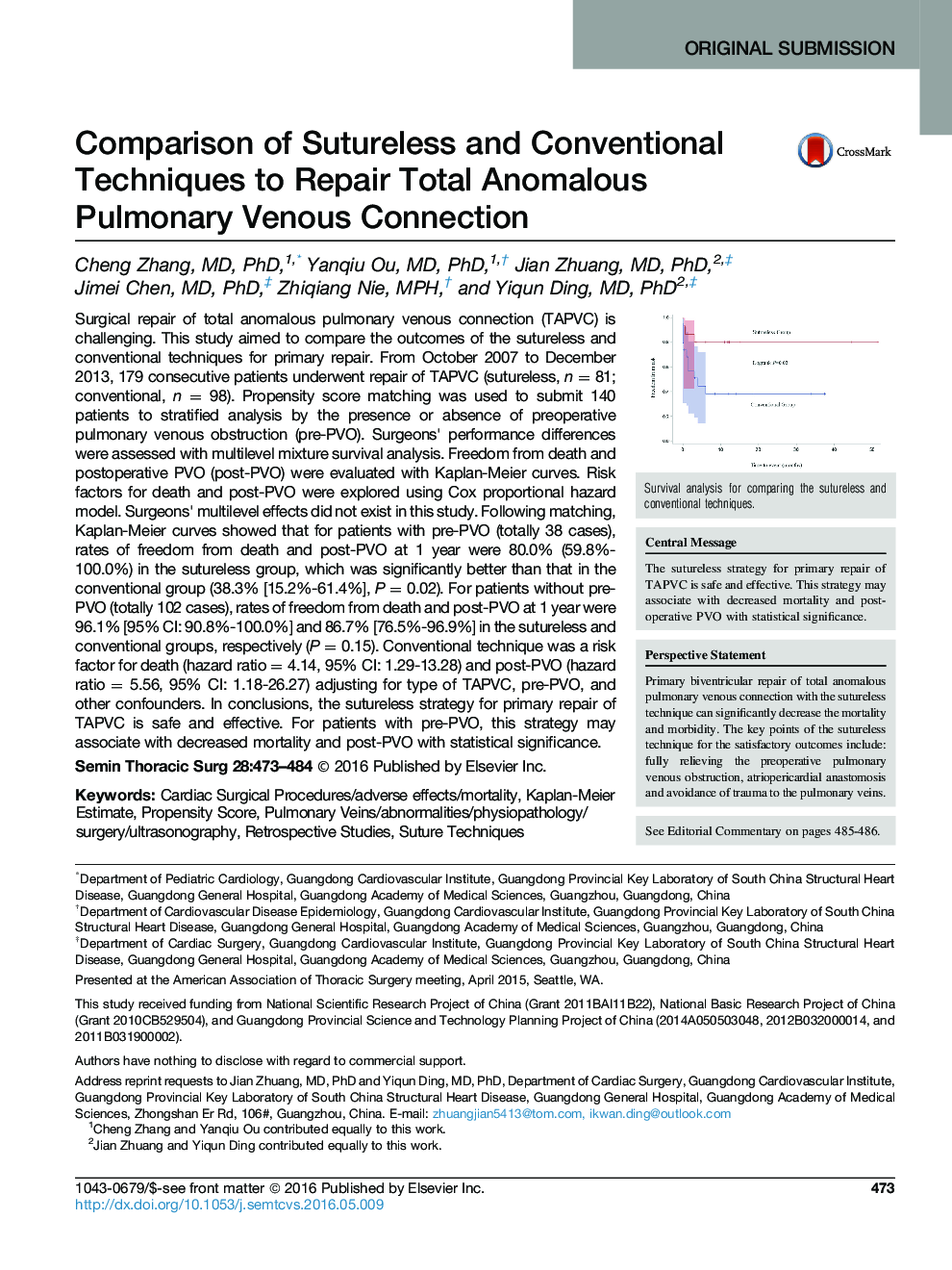| Article ID | Journal | Published Year | Pages | File Type |
|---|---|---|---|---|
| 5621569 | Seminars in Thoracic and Cardiovascular Surgery | 2016 | 12 Pages |
Surgical repair of total anomalous pulmonary venous connection (TAPVC) is challenging. This study aimed to compare the outcomes of the sutureless and conventional techniques for primary repair. From October 2007 to December 2013, 179 consecutive patients underwent repair of TAPVC (sutureless, n = 81; conventional, n = 98). Propensity score matching was used to submit 140 patients to stratified analysis by the presence or absence of preoperative pulmonary venous obstruction (pre-PVO). Surgeons׳ performance differences were assessed with multilevel mixture survival analysis. Freedom from death and postoperative PVO (post-PVO) were evaluated with Kaplan-Meier curves. Risk factors for death and post-PVO were explored using Cox proportional hazard model. Surgeons׳ multilevel effects did not exist in this study. Following matching, Kaplan-Meier curves showed that for patients with pre-PVO (totally 38 cases), rates of freedom from death and post-PVO at 1 year were 80.0% (59.8%-100.0%) in the sutureless group, which was significantly better than that in the conventional group (38.3% [15.2%-61.4%], P = 0.02). For patients without pre-PVO (totally 102 cases), rates of freedom from death and post-PVO at 1 year were 96.1% [95% CI: 90.8%-100.0%] and 86.7% [76.5%-96.9%] in the sutureless and conventional groups, respectively (P = 0.15). Conventional technique was a risk factor for death (hazard ratio = 4.14, 95% CI: 1.29-13.28) and post-PVO (hazard ratio = 5.56, 95% CI: 1.18-26.27) adjusting for type of TAPVC, pre-PVO, and other confounders. In conclusions, the sutureless strategy for primary repair of TAPVC is safe and effective. For patients with pre-PVO, this strategy may associate with decreased mortality and post-PVO with statistical significance.
